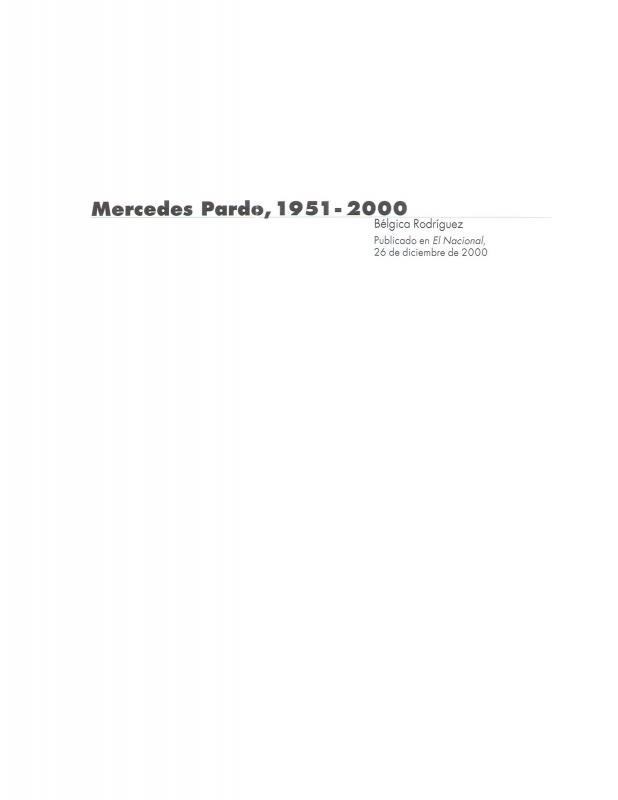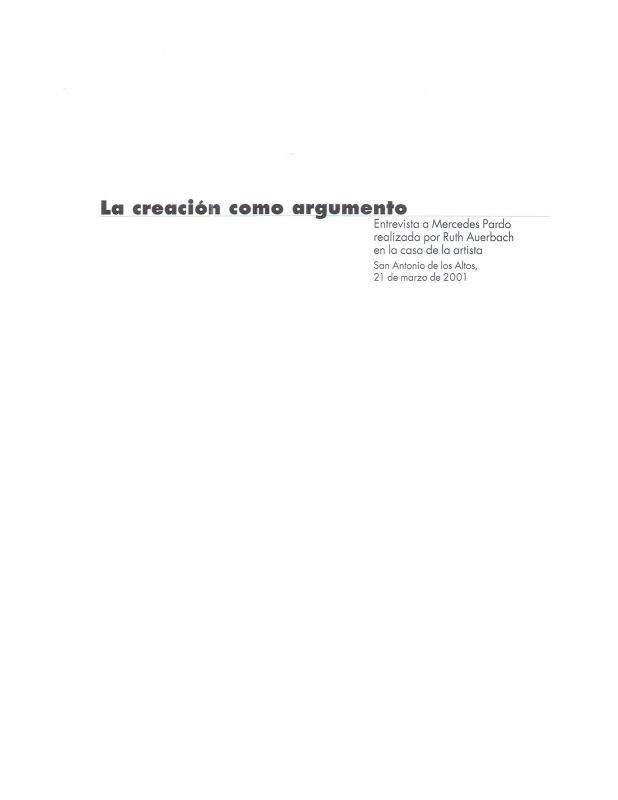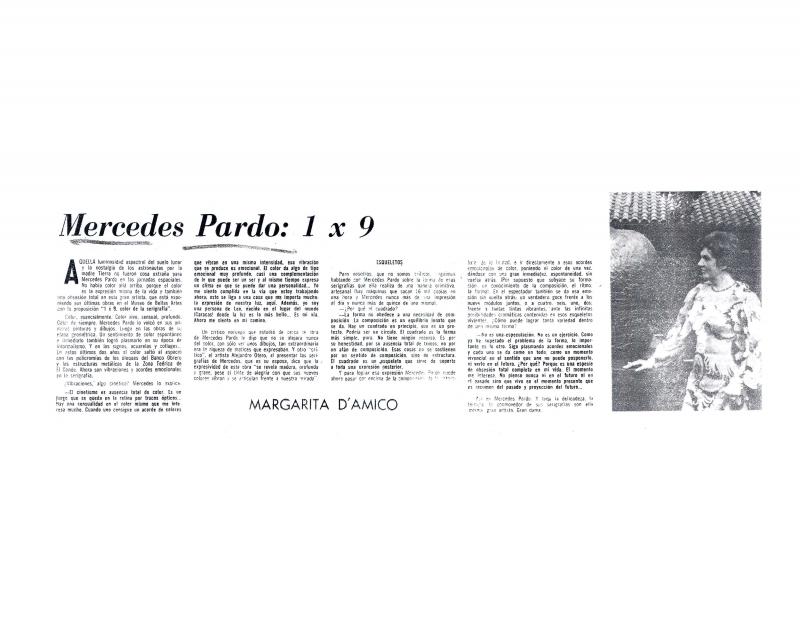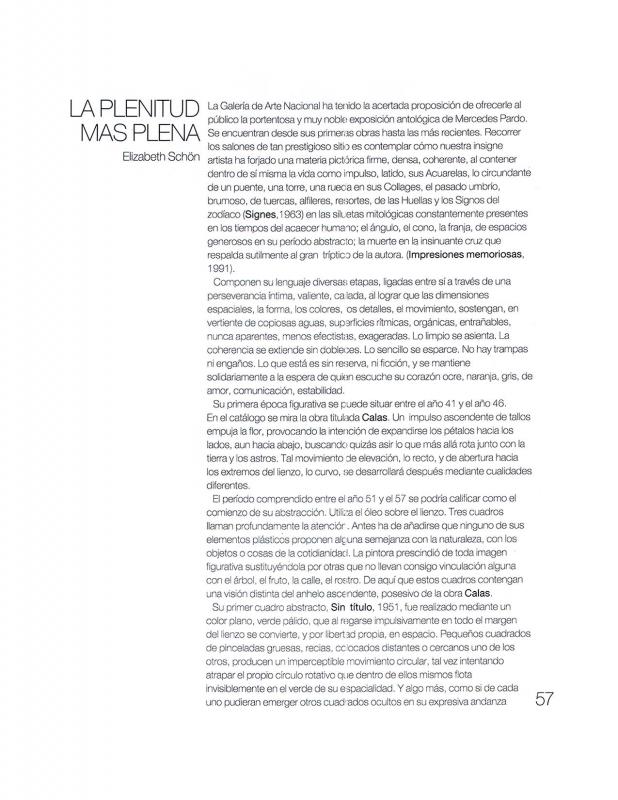The text by Venezuelan poet and essayist María Fernanda Palacios (b. 1945) on Mercedes Pardo (1921–2005) is divided into chapters; it is written in the form of a story that is reconstructed through various conversations with the painter and engraver in her residence-workshop in San Antonio de los Altos (a town adjacent to Caracas). Palacios delves deeply into themes that go beyond Pardo’s art to offer a complete image of the exceptional person she was, as well as [providing] context [for her work] and the era [in which it was created]. This essay (the most extensive written on the artist to date) offers new elements with which to understand and analyze her artistic language, based on a broad reading of traditional styles, especially landscape, as well as those movements in which she was a part (such as informalism). Palacios proposes an approach to “the idea of landscape,” seen from a psychological point of view rather than its form; the poetics of the artist and her mastery establish unknown hierarchies and borders among planes, space, and color. These are analyzed as the expression of a landscape that is an image (environment) of a geography and exterior reality that communicates the defining features of a specific artistic nature: discrete and withdrawn, with an aversion to “vedettismo,” [the need to be a star], and always longing for solitude.
With regard to context, the author dedicates a good part of her essay to Venezuelan customs and manners; the differences between retiring to the country in Europe and living “in the mountains” of Venezuela—a reference to the decision made by “Merecedes” and “Alejandro” [Otero], her husband, to live outside the city. She also describes 1950s Venezuela, the opening up to modernity and its protagonists. She comments extensively on life in Paris experienced by the young Venezuelans belonging to Los Disidentes [The Dissidents] (1950) group. The text here is rich in information on the groups, galleries, and intellectuals in postwar Paris; the predominant ideologies and arguments among the “indigenous” and “universalist,” “figurative” and “abstract” artists; leftist dogmas; and the difference between abstraction in Europe, the United States, and Latin America, etc..
[For a critical essay on the artist by Bélgica Rodríguez (2001), see “Mercedes Pardo: 1951–2000” the ICAA digital archive doc. no. 1143027. For other texts on her work, see the interviews conducted by Ruth Auerbach, “La creación como argumento” [Creation as an Argument] (doc. no. 1143060) and by Margarita D’Amico, “Mercedes Pardo: 1 x 9” (doc. no. 1155959); the text by Roberto Guevara, “Color y módulos en Mercedes Pardo” [Color and Modules within Mercedes Pardo] (doc. no. 1155991); and the essay by Elizabeth Schon, “La plenitud más plena” [The Highest Peak] (doc. no. 1102269)].





